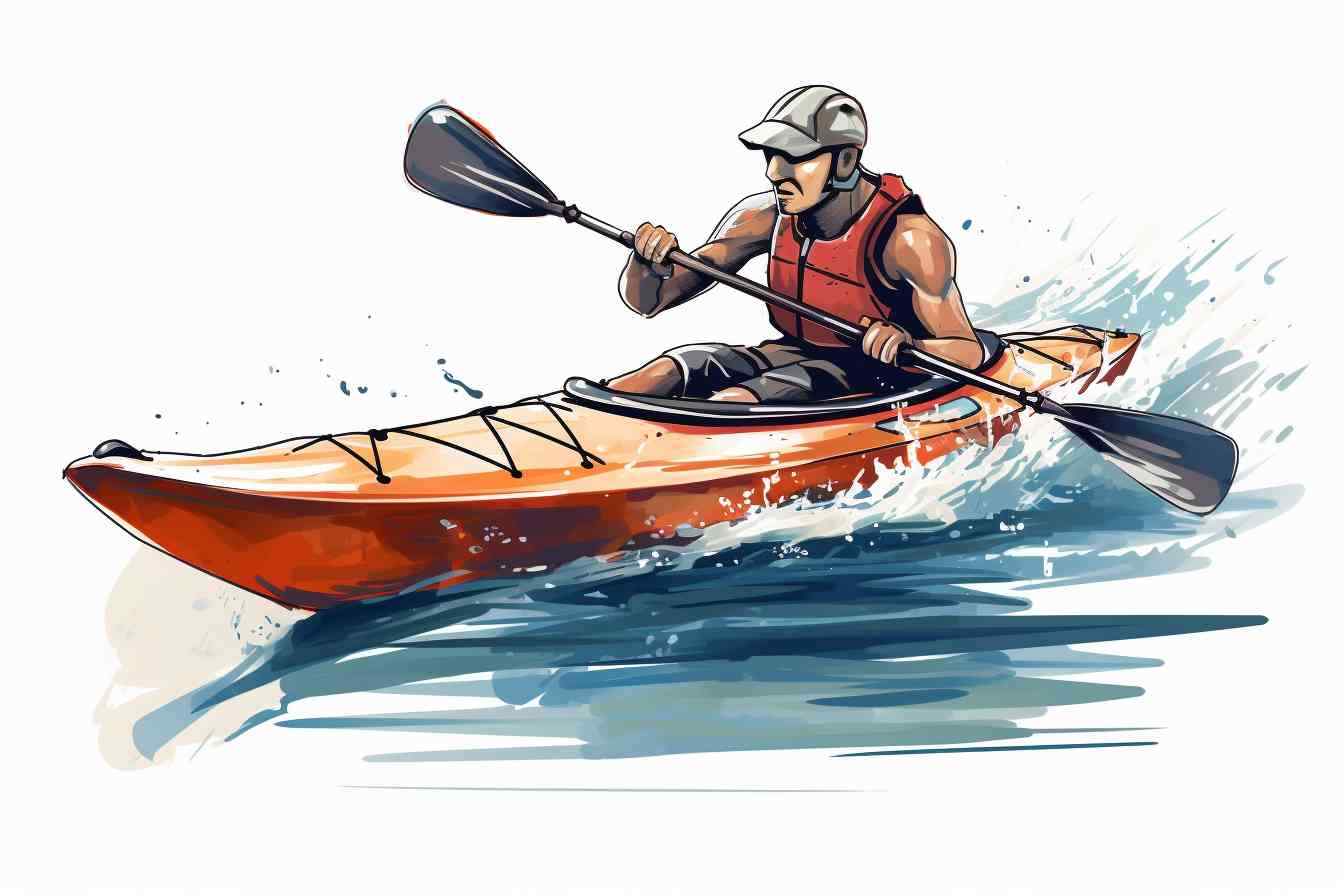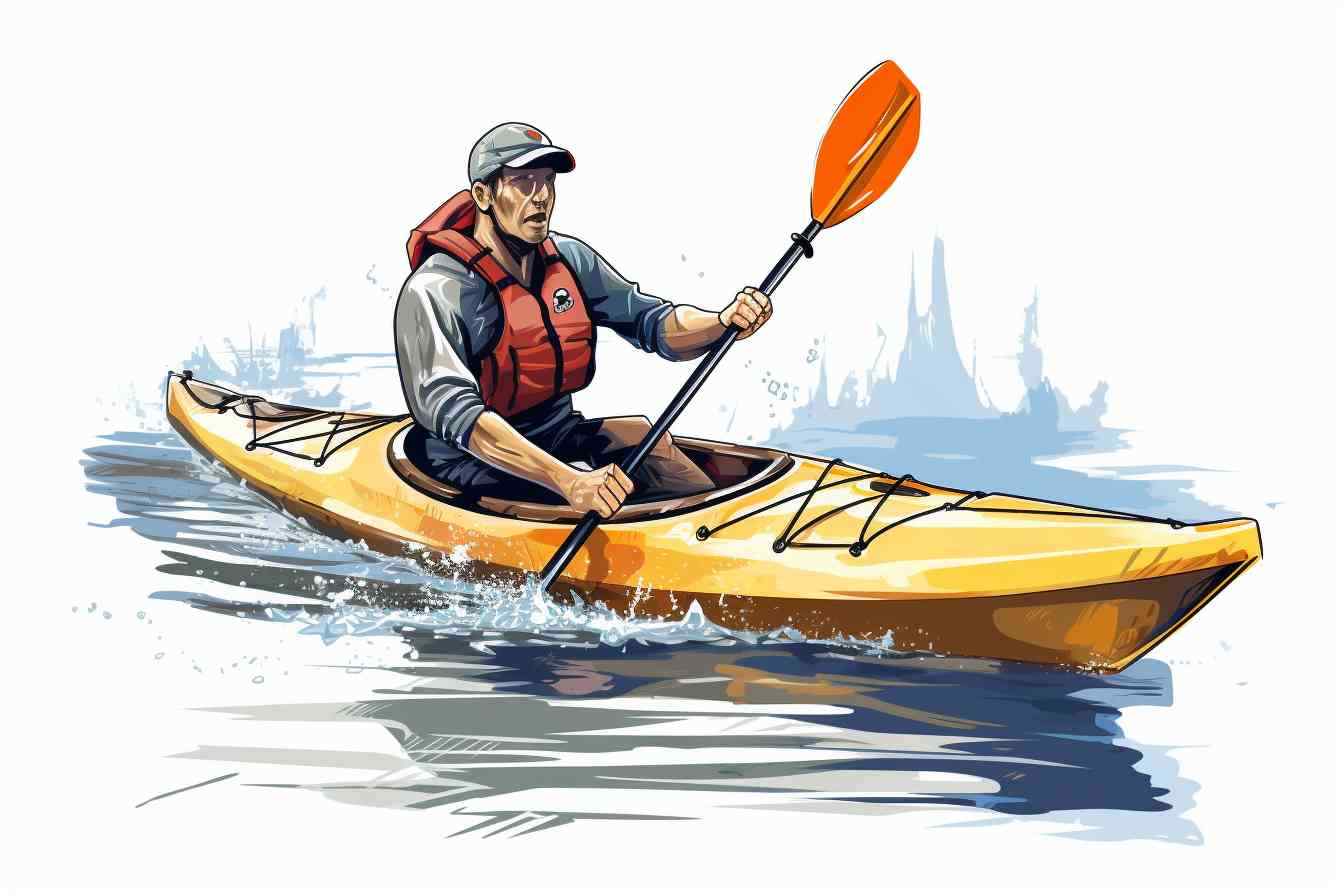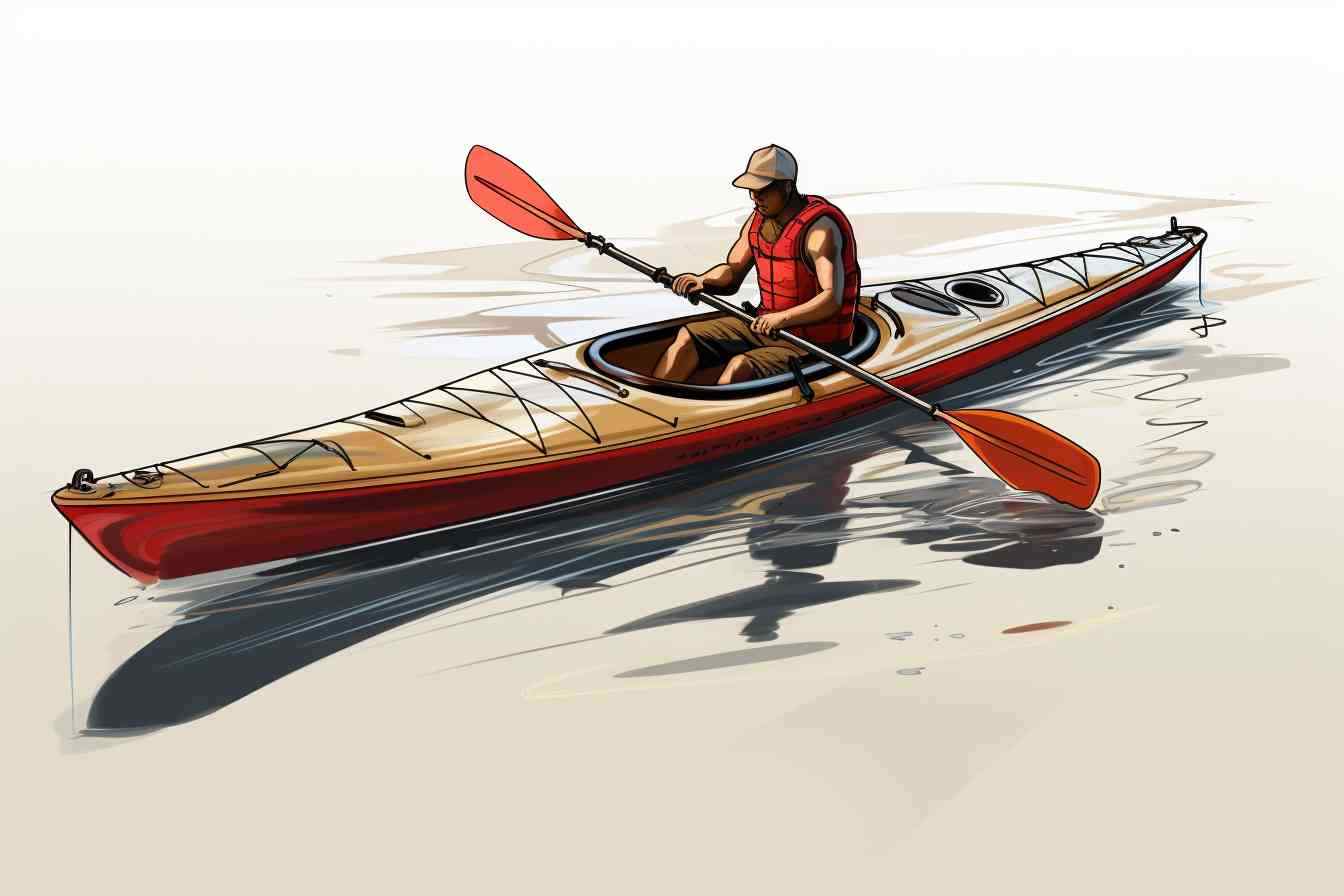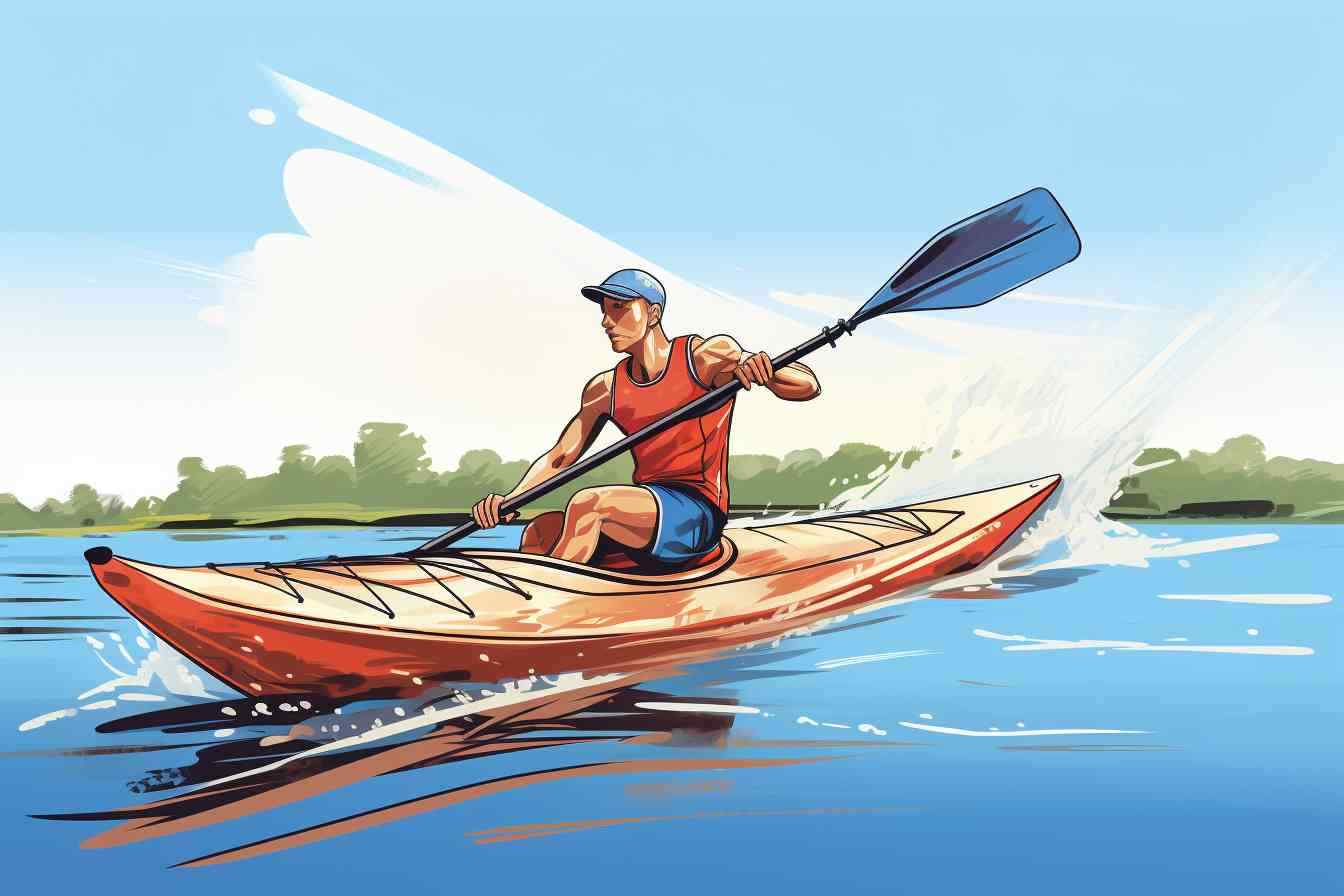Mastering the Art of Kayak Paddle Strokes Unlock Your Potential

Summary
- Intro: Basic Kayak Paddle Strokes: A Step-By-Step Guide
- How Do You Paddle A Kayak Step By Step?
- What Is The Correct Paddle Technique?
- What Is The Most Efficient Kayak Paddle Stroke?
- How Should Kayak Paddles Be Set Up?
- Final Verdict
- Frequently Asked Questions
- Q1: What are the basic kayak paddle strokes?
- Q2: How can I perform the forward stroke in kayaking?
- Q3: What is the reverse stroke in kayaking and how is it executed?
- Q4: How can I master the sweep stroke for steering my kayak?
- Q5: Can you explain the draw stroke in kayaking?
- Q6: How should I grip the kayak paddle?
- Q7: Should my paddle be dipped fully into the water while stroking?
- Q8: Is it necessary to use my whole body while paddling?
- Q9: How can I keep my kayak balanced while paddling?
- Q10: Is it okay if my kayak keeps veering off to one side while paddling?
- Related Video
- Frequently Asked Questions
Intro: Basic Kayak Paddle Strokes: A Step-By-Step Guide

I’ve got to tell you, folks, if you’re looking to get into kayaking, knowing your paddle strokes is just about as important as securing your life jacket. Wouldn’t you agree? It’s the strokes that get you from point A to B— from idling in the gentle lap of the waves to steering through the heart-pounding thrill of white water. You might be a beginner, but there’s a joy in every little stroke you master, a feeling of accomplishment that’ll get you hooked!
Now, the Forward Stroke is our bread and butter, right? It is your kayak’s gas pedal, the true engine of your little watercraft! Hold your paddle loosely and remember, it’s all in the torso – not just your arms. Now, let’s dive in!
Imagine we are sitting on our kayak, paddle in our hands. You’ve got to ‘plant’ the blade completely into the water near where your feet are. Wait, you ask, what’s ‘plant’? Good question! It’s simply dipping one end of your paddle into the water, kinda like planting a seed. Then, with a gentle wind-up of your torso, you ‘pull’ the blade towards you. Not just with your arms, mind you, but with a little help from your torso as well. Feel that? That’s your kayak pushing forward, propelled by your very own strength. Exciting, ain’t it?
Now, I’ll let you in on a little secret. Want to turn your kayak? Try the Sweep Stroke! This one starts like a Forward Stroke but then, oh boy, you’re in for a twist! You’ll ‘sweep’ the blade in a wide arc, all the way from the bow to the stern. It might seem tricky at first, but a little practice, and you’ll spin your kayak like a top!
Remember, kayaking is about the journey, not just the destination. And with these basic strokes under your belt, you’re ready to embark on a journey of thrill, beauty, and self-discovery. Pretty amazing, don’t you think?
That, my friends, is the magic of kayaking. It’s not just about the destination, but also about how you get there. And with these basic strokes under your belt, you’re well on your way to a great kayaking adventure. So let’s grab our paddles and get to it, shall we?
How Do You Paddle A Kayak Step By Step?

Well, I’ll tell ya, paddling a kayak ain’t as tough as it first appears. It’s just a matter of proper technique and practice. So, let’s take a deep-dive into step-by-step paddling, shall we?
First things first, grab your paddle, hands shoulder-width apart. Depending on the direction you want to go, the face of the paddle — that’s the curved part — faces toward you. Now, are you ready to row your boat?
Step one, the forward stroke. This is your get-up-and-go stroke. Dip one blade into the water at a time, near your feet. Then give it a big, hearty pull towards the back of the kayak. Imagine a bubble around the kayak and you’re pushing that paddle along the line of the bubble. Rotate your torso as you do this. That’s right — it’s not all in the arms, folks. The power comes from your core.
Step two, the reverse stroke. Basically, you’re doing the forward stroke but, well, in reverse! Start by dipping the paddle in at the back of the kayak, then push it forward. Think of it like you’re in reverse gear.
And voila! You’re doing the back paddle. This stroke’s great for slowing down, stopping, or, well, moving backwards. Like when you realize you’ve left your lunch on the shore!
Next up, the sweep stroke. This one’s all about turning. For a right sweep, push the right-side paddle in a wide arc, from front to back. The front of the kayak will swing left as a result. For a left sweep, just do the opposite.
Remember, keep your wrists straight and use your torso. It’s tempting to get all in your arms, but I promise, your abs will do a better job. Plus, they’ll thank you later!
Remember, all these strokes will make more sense, once your bum is in that kayak seat and you’re feeling the movements firsthand. Practise makes perfect! Now go on, give it a shot!
How To Paddle A Kayak For Beginners
Alright, let’s get started on mastering the basics of kayak paddling! Here’s a step-by-step guide to help you ace your initial attempts in any kayaking journey:
-
The Forward Stroke: This one is your bread and butter! It’s what moves your kayak ahead. The trick is to extend your dominant hand ahead and fully immerse your paddle in the water. Pull it back towards yourself, keeping it as close to your kayak as possible. Twist your torso - not your arms - to enhance the stroke’s effectiveness. Rinse and repeat with your opposite hand.
-
The Reverse Stroke: Quite simply the Forward Stroke but in reverse! It’s important for the times you need to slow down, stop, or move backward. Start by extending your paddle in the water near the stern (back end) of the kayak, then push the paddle forward. Again, remember to rotate your torso to power the stroke.
-
The Sweep Stroke: This stroke helps you turn your kayak left or right. If you wish to turn right, you’ll have to do a wide sweeping stroke on the left side and vice versa. Start from the bow (front end) of your kayak and sweep the paddle in a big arc toward the stern.
-
The Draw Stroke: Want to move your kayak sideways? The Draw Stroke’s got your back! To practice this, reach out with your paddle, and pull water towards yourself. As you do this, move the blade perpendicularly to your kayak and out from the side. It’s a bit tricky, but practice will make it perfect!
-
The Brace Stroke: Talk about a lifesaver - this stroke is used to prevent your kayak from capsizing. Keep your paddle flat on the surface of the water. Push down on the water while maintaining your balance. It’s tricky but a great weapon to have in your arsenal.
-
The Stroke Timing: In tandem kayaking, timing your strokes with your companion is vital to keep the kayak stable and ensure it goes in the right direction. If you’re at the front, set a sustainable pace and the person at the back should match your rhythm.
Remember, patience, perseverance, and practice are paramount in ensuring you get the hang of these kayak paddle strokes. Also, safety should always be a priority - wear your lifejacket, and never kayak alone if you’re a beginner. And lastly, don’t forget to have fun and enjoy the water!
What Is The Correct Paddle Technique?

So, you’ve got your eyes on the tranquil, clear waters, and you’re all revved up to take your kayak for a spin. You may find yourself asking, “” The main thing? It’s all about how you hold onto that paddle and the finesse you put into each stroke.
To start off, grip your paddle with both hands spaced apart. You’d want your knuckles to be facing upwards and your grip to be firm, yet relaxed. Now, twist your torso—keep in mind, kayaking is more about core strength and less about arm strength. Use your whole body while paddling, not just your arms. You’ll find that the strokes are way easier this way, and fatigue won’t knock at your door as soon. Isn’t it amazing how it all fits together?
There are a few standard paddle strokes that you should learn— first is the Forward Stroke. It’s the most common, and the one you’ll be using frequently. Start by dipping your paddle blade in the water near your feet, and pull it back towards your hip. Then lift it out and repeat on the other side. Pretty simple, huh?
Next up is the Reverse Stroke, which is essentially the Forward Stroke in reverse! It starts at the hip and ends at your feet, and is useful for backing up or slowing down.
Lastly, we’ve got the Sweep Stroke, ideal for turning your kayak. Begin the stroke at the bow (front) of your kayak and sweep it in a wide arc towards the stern (back).
Remember, every great paddler was a beginner once , so don’t be hard on yourself if you don’t get it right the first time. With some practice, these strokes will soon become second nature. Enjoy the water and paddle on!
What Is The Most Efficient Kayak Paddle Stroke?

Well first off, let me tell you that the most efficient kayak paddle stroke is the forward stroke. It’s gonna be the one you use the most, whether you’re paddling to your favorite fishing spot or gliding across calm waters on a sunny day . It’s about as basic as it gets, but it’s absolutely critical to master.
The key to a good forward stroke is all about technique. You start by reaching forward with your upper hand and inserting the blade fully into the water . The power phase of the stroke then begins as you pull the blade through the water back towards your hip. It’s important to remember to rotate your torso as you do this, and not just rely on your arms - it’s the torso that’s bringing the power, not just your arms .
Another key element to making your forward stroke more efficient is the use of a “push-pull” motion. As you pull on the lower hand, you should be pushing with the upper hand. It’s a bit like a see-saw, if you think about it. And, don’t forget to use your legs - they are part of the whole system that makes the stroke work .
Now, once the blade reaches your hip, it’s time for the release . Lift your paddle out of the water, and you’re ready to do the whole thing over again . And - I can’t stress this enough - keep your forward stroke smooth and rhythmic. It’s a dance, really: reach, power, release, repeat. The smoother the dance, the better your forward stroke will be.
So, there you have it! The most efficient kayak paddle stroke in a nutshell! Practise it, perfect it, and your kayaking adventures will go a whole lot smoother. Happy paddling, my friends!
How Should Kayak Paddles Be Set Up?
So you’ve finally gotten yourself a brand spankin’ new kayak and the open water is inviting you in. What’s next? Well, setting up your kayak paddles correctly is a great start, trust me. Now, let’s get this ball rolling. Shall we?
Setting up the kayak paddles is more than just randomly piecing things together - it’s about ensuring you have a balanced, ergonomic setup that can increase your paddling efficiency while minimizing strain. To set up your paddle, you have to take note of the angling of the blades. If the blades are parallel to each other, they’re in the “match” set up and this alignment reduces wind resistance and is great for beginners.
Conversely, if the blades are offset from each other - typically between 30 to 45 degrees - it’s in what’s known as the “feathered” setup. This reduces wind resistance even more, but requires a certain degree of wrist twisting which, let me tell you, might take some getting used to.
Adjusting the drip rings is also part of the equation. These are there to prevent water from trickling down the shaft into your hands or on your body. They should be positioned around a hand’s width from either end of the shaft.
In conclusion, the setup of the paddle is a matter of personal comfort and paddling style. Go out there, get your paddle set up and hit those beautiful waters! Remember, it’s all about getting out there and enjoying the ride.
Final Verdict
While I’m not a fan of goodbyes, I’m afraid we’ve come to the end of our kayak paddling crash course! But before we part ways, let me sum up the experience for you—just a quick rundown of what we’ve covered. In this thrilling journey, we’ve discussed, learned, and mastered the basic kayak paddle strokes, right?
Remember the forward stroke? It’s the most vital one you’ll have to master. It’s like your bread and butter when you’re out there navigating the waters. Then there’s the sweep stroke, your secret weapon for those sneaky turns. Next up, we’ve got the reverse stroke, a trusty friend for when you need to back it up a little, especially in tight spots. And let’s not forget the draw stroke—picture-perfect for moving sideways on the water without turning the entire boat around.
In a nutshell, mastering these strokes could be the difference between struggling out there on the water and enjoying a smooth, peaceful paddle across your favorite lake or river. It’s fair, isn’t it? All that practice could pay off with an effortless glide across the water, making your time in the kayak truly enjoyable.
Remember, like everything else, mastering these strokes will take time. If you don’t get it right the first time, don’t sweat it! Keep on practicing, and soon enough, you’ll be well-versed with the strokes, promising yourself a smooth paddle, every time. So, hold your paddles high, my fellow adventurers, and let’s embrace the waters with confidence! That’s all from me, folks. Happy paddling and until next time…
Frequently Asked Questions
Q1: What are the basic kayak paddle strokes?
To get started in kayaking, you need to know four fundamental paddle strokes: the forward stroke, the reverse stroke, the sweep stroke, and the draw stroke. Each one serves a specific function in controlling the movement and direction of your kayak.
Q2: How can I perform the forward stroke in kayaking?
The forward stroke is the most basic stroke for propelling your kayak forward. Just grip your paddle with both hands, rotate your torso, and dive one blade into the water next to your foot. Push the blade through the water using your upper body, and lift it when it reaches your hip.
Q3: What is the reverse stroke in kayaking and how is it executed?
The reverse stroke is just as it sounds - it’s used for moving backwards. For this, you need to reach back with your paddle blade and pull it forward. So, it’s exactly opposite to the forward stroke.
Q4: How can I master the sweep stroke for steering my kayak?
The sweep stroke helps in turning your kayak. To perform it, you need to stretch out your paddle as per your reach, then sweep it in a wide arc from the front to the back of the kayak. The wider the arc, the more dramatic the turn will be.
Q5: Can you explain the draw stroke in kayaking?
Absolutely! The draw stroke is used to move your kayak sideways. It involves reaching out with your paddle, drawing water towards you, and then pushing it away.
Q6: How should I grip the kayak paddle?
Holding the paddle correctly is crucial. Your hands should be shoulder-width apart, with knuckles aligned with the blade. When one blade is in the water, the other should be parallel to the water’s surface.
Q7: Should my paddle be dipped fully into the water while stroking?
No, submerging your paddle fully can make you lose balance. The blade should slice through the water smoothly, without creating too much splash or resistance.
Q8: Is it necessary to use my whole body while paddling?
Yes, kayaking is a whole-body sport. Your torso should do most of the work while your arms guide the strokes. This technique ensures efficient paddling and avoids straining your arms.
Q9: How can I keep my kayak balanced while paddling?
Maintain a loose, relaxed posture while keeping your center of gravity low. It’s essential to stay flexible as the kayak shifts beneath you.
Q10: Is it okay if my kayak keeps veering off to one side while paddling?
If your kayak keeps veering off to one side, it could signify that your strokes are not even. Try to maintain an equal rhythm and force on both sides to keep your kayak moving straight. Don’t be discouraged, it’s a common newbie challenge and gets better with practice.


Comments